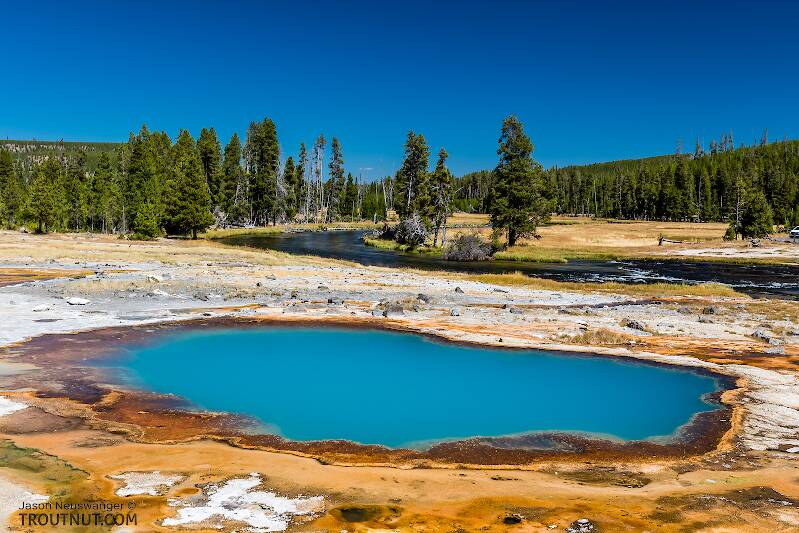
Salmonflies
Pteronarcys californica
The giant Salmonflies of the Western mountains are legendary for their proclivity to elicit consistent dry-fly action and ferocious strikes.


Mayfly Species Raptoheptagenia cruentata
Species Range
Physical description
Most physical descriptions on Troutnut are direct or slightly edited quotes from the original scientific sources describing or updating the species, although there may be errors in copying them to this website. Such descriptions aren't always definitive, because species often turn out to be more variable than the original describers observed. In some cases, only a single specimen was described! However, they are useful starting points.
Male Spinner
Wing length: 9-10 mm
Allied to Heptagenia flavescens, but smaller; mesonotum and abdominal tergites with light brown dorsal band, tibiae usually twice-banded; genitalia of the flavescens type.
Head yellowish, vertex sanguineous; ocelli fuscous; antennal filament dusky, tip whitish. Eyes in living insect pale bluish grey, divided by black line. Thoracic notum sanguineous or light brown. Legs yellow. Reddish median and apical bands on each femur, the area between these paler reddish. Usually all the tibiae have the basal and apical third pale reddish; but as Dr. McDunnough has indicated, these markings may be almost obsolescent. Claws and tarsal joinings of all legs dusky. Basal joint of fore tarsus about 1/3 of second; in hind leg, slightly shorter than second. “Wings hyaline; veins and cross veins moderate, the veins finer than the cross veins, all fuscous except at extreme base of wing and the basal two-thirds of the costa, where the veins are respectively hyaline and yellowish” (Walsh). According to the original description, all the costal cross veins, including the humeral vein, are of “uniform coarseness,” but in specimens which Dr. McDunnough has of this species, the apical costal cross veins are pale and indistinct, the basal ones black and distinct. Costa uniformly tinged with yellow throughout its length; subcosta thickened and darker “for the length of half a millimeter” (Walsh) in the region of the bulla, as in H. flavescens.
Abdomen yellow; tergites with median dorsal band of light brown to sanguineous, the apical tergites paler; the overlapping portions appear darker, presenting an annulate appearance. Forceps pale, tips brownish. Tails whitish, joinings dark brown; toward the base the dark joinings are alternately narrow and wide. Genitalia of the flavescens type (see fig. 94).
This species is closely allied to H. flavescens, but it is smaller, with yellow costa, and usually with distinctly banded tibiae. In flavescens, the fore tarsus is slightly longer than the tibia, while in H. cruentata (now a synonym of R. cruentata) it is said to be of the same length as tibia.
Start a Discussion of Raptoheptagenia cruentata
References
- Needham, James G., Jay R. Traver, and Yin-Chi Hsu. 1935. The Biology of Mayflies. Comstock Publishing Company, Inc.
Mayfly Species Raptoheptagenia cruentata
Species Range
Resources
- NatureServe
- Integrated Taxonomic Information System
- Global Biodiversity Information Facility
- Described by Walsh (1863)

